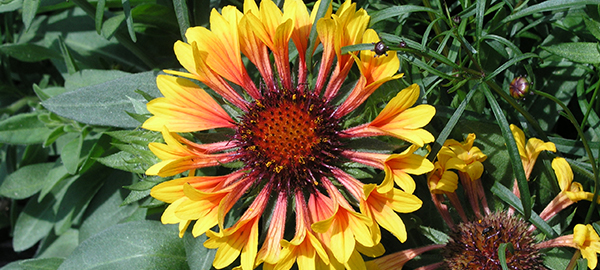
Sept. 24, 2014 | Donna Balzer
Born to be wild
The proper way to collect wildflower seed in Calgary and areaBy his own admission, Murray considers himself an amateur green thumb.
He bought an acreage property in Springbank 10 years ago and has continued to improve his garden space every year.
But now he is thinking of something big. He wants to start collecting wildflower seeds from his fields and spreading it around the acreage to boost the wildflower effect on his south-facing slope. All he needs to fulfill his dream is a paper bag, scissors and a marking pen.
But Murray still wants to know more – such as, how will he know when the seed is ripe on his black-eyed Susan's? And when could he start collecting the ripe seed? It was snowing when we spoke in early September, but he was keen to get started as soon as possible.
First, he has to go out into the field by his house and find the plants he remembers blooming. They should be easy to find since the flowers he asked about have a big flower stalk held high above the leaves and often bloom into late fall.
If he has brown-eyed Susan's (Gaillardia aristata), they are probably ready to collect now. If he has black-eyed Susan's (Rudbeckia hirta), they might be ripe a bit later.
In Springbank, he might have both species, because both hail from the dandelion family and both are native to the area. However, they are treated the same way.
Like the closely related dandelions, the two Susan's produce seed that pops off the flower head when it is ripe. Think of the many times the wind or small children have blown dandelions and scattered seed in all directions. If you have to do any tugging – or anything more than blowing – the seeds are not ripe and may not grow.
Second, when Murray finds the plants he wants to collect, he can shake the seeds into a paper bag. If the seeds are not ripe and need tugging, he can still collect them by clipping the stems long (with scissors) and placing them upside down in a paper bag and labeling it. The unripe seed will continue to take moisture from the stem and ripen, gradually falling off as seed matures dropping into the bag.
Some wild flowers, such as columbine, turn black, and, like a salt shaker, the seeds fall out of the seedpods when they are ripe. Small tip: picking the stems long helps because it allows the seeds to further mature.
If the seed Murray collects is ripe, he can simply spread half the seed into the soil when he collects it. If he
prefers, he can save the seed and start it indoors in the spring.
As an "amateur green thumb," I have no doubt Murray will figure it out. In the meantime, we have booked an appointment and I will pop by his mini-farm later this month to help him separate the chaff from the seed, and sort out the good from the bad wildflowers.
Donna Balzer is a garden writer and speaker. Check out her blog at gardenguru.net or follow on twitter
@NoGuffGardener.
Tagged: Donna Balzer | Guest Column | seed




